Following an agreement signed by Paris and Tokyo officials last year, the collaborative effort to bring international recognition to traditional Japanese craftsmanship was revealed at Maison&Objet Paris in March 2022.
In 2016, the new governor of Tokyo aimed to recognize craftsmanship from the era when Tokyo was called Edo, to value such craftsmen who have continued the tradition of their work. The Edo period dates back to 1603 when the town saw the establishment of the Shogunate Government. When the new Meiji Government was formed in 1868, Edo became Tokyo.
The initiative, known as the Edo Tokyo Kirari Project, expanded in 2021 when officials signed an agreement with Paris, one which ties together Tokyo and Paris in a unifying, collaborative way through creativity. The French collaborators (designers) presented their works at the Maison&Objet Paris event held in March; the Japanese artisans were streamed live on a large screen during the conference. The agreement put three design studios from Les Ateliers de Paris in touch with six Japanese crafts manufacturers based in Tokyo—cutting glass, Noren textile, kimekomi dolls, chusen dyed textile, glassware and kumihimo braids.
Jean Couvreur collaborated with Matsuzaki to produce decorative boxes and with Nakamura to fabricate a Noren rail and textile. Koikko Matsuzaki Ningyo has been making Japanese traditional dolls, using the Kimekomi technique, for more than three generations. This specific know-how includes the creation of wooden dolls and pattern designs as well as the meticulous application of brocard (traditional silk pieces) on the body of his figurines. The Petit Temple project uses these skills to create storage boxes. More than reinventing these skills, it is a matter of re-reading them in order to apply them to a new sector, to a new market. The boxes, all-round hump, evoke small temples and are the medium of expression of Mr. Matsuzaki’s know-how.

“We used to use many different fabrics in our products, so that the products can be beautiful to look at. This time, the designer we collaborated with (Jean Couvreur) chose a single fabric with simple colors. This choice made it possible to create a product refined in its simplicity. For us, it is ultimately a very Japanese way of seeing luxury, in a rational aesthetic that makes us think of Wabi-sabi.” -Matsuzaki
“We wondered a lot about how to pass on our know-how to foreigners. With the new products we are developing, we have rediscovered the beauty of fabrics Japanese used. Our greatest wish is to introduce the technique of Edo Kimekomi Ningyo dolls through everyday objects.” – Matsuzaki
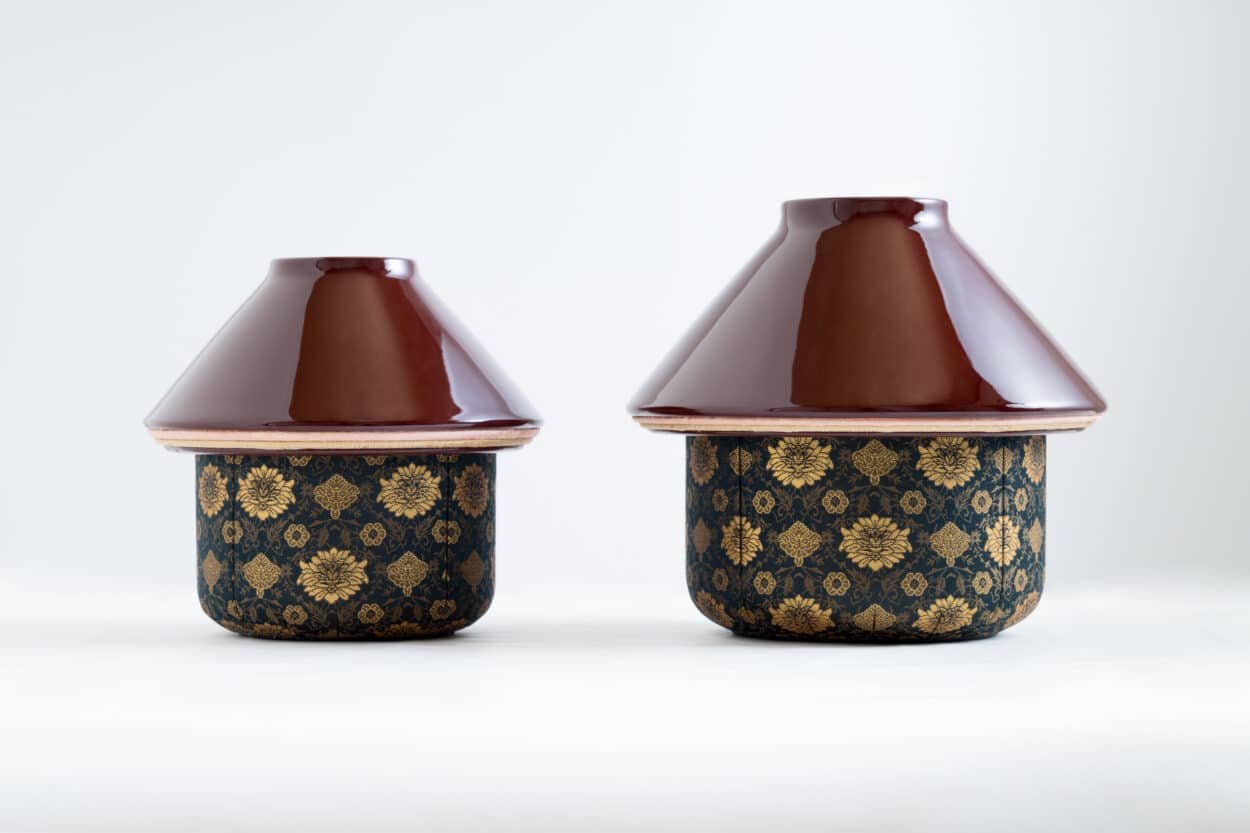

Mr. Nakamura runs the Nakamura company. He distributes exceptional Norens made with traditional fabric printing skills. In Europe, the noren is usually composed of two pieces of fabric hanging from the doors of some Japanese-inspired restaurants. The objective of the project was to explore new possible applications for the Noren. It then becomes strategic in order to question the very positioning of the object. Nrail proposes a system of fixation of the noren. It is made of wood and is installed directly on the ceiling rather than in the traditional fabric sheaths. It is extremely simple in its use, design and material. Nrail is available in three lengths to fit easily into any room in the house or office. It can be used as a screen in a bedroom, as a suspension between the kitchen and the living room, as a transparent wall in a meeting room, or as a divider in an open space.
“I collaborated with Jean Couvreur, a French designer on a typically Japanese product, the noren. I wanted Europeans to be able to use noren in their interiors,” said Mr. Nakamura in an interview with ArchiExpo e-Magazine. “I would like to introduce the traditional dyeing techniques used in the making of noren. I also want to convey the idea of being able to separate rooms, not with walls but with noren.”
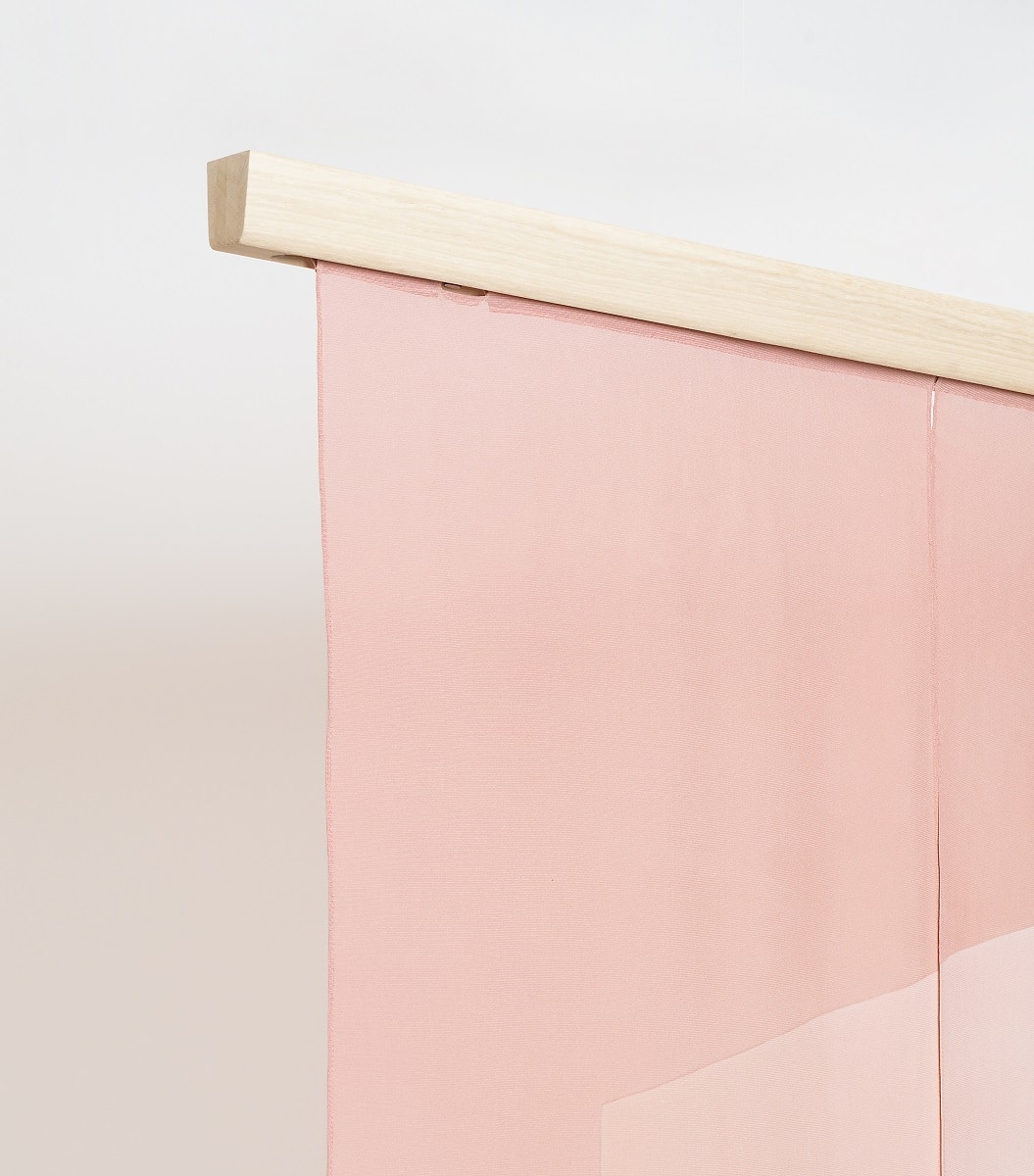
SCMP Design Office worked with Kimoto Glass on the OPTICA sake set and with Ryukobo on the KUMI scarves. In the collaboration with Kimoto Glass, the designers aimed to discover the Japanese culture through sake and the world of glassware. They wanted to create an everyday object that the Japanese would use. Working with clear glass is mainly working with light and reflections between clear glass and sake. For OPTICA, the name of which stems from the notion of an optical clear glass, the designers studied the thickness and weight of a sake glass set. The whole shape of the item starts from a thick concave base, which looks like a biconcave lens, to a thin and elegant wide edge. This wide-open top is also useful for pouring sake into the carafe but also to drink sake while having a small capacity glass. As it’s a set of glass, you can stack the glass into the carafe for storage. You can also stack the glasses on each other.
“I am very grateful for this collaboration with the SCMP DESIGN OFFICE studio which allowed to develop a very elegant sake set with the craftsmen at Tajima Glass. We received many good returns in Paris and Japan. Since July 1, our products have been on sale at Isetan, one of Tokyo’s most iconic department stores. We are very happy to have been able to collaborate with Sébastien Cluzel.” – Kimoto Glass
“We work with glass craftsmen who have been living in Tokyo since the Edo era. They are blowers of glass and work with glass in the traditional way. Unlike mass production, glassworks manufacture handmade products, in limited numbers, which may vary slightly from one room to another. This know-how, this taste for the handmade, we wish to transmit it to our customers and to the rest of the world. Maintaining and preserving know-how while meeting the needs of the modes of modern lives.” – Kimoto Glass



With the KUMI scarves, the designers chose to explore one of the 350 Kumihimo techniques that Mr. Fukuda and his family are mastering. Attracted by the sample of silk flat weaving, the designers decided to create a bigger piece that could have its own place in the home. By combining colored strips of woven threads, they created a pattern inspired by the common PAL test pattern and by the flooring layout. The idea was to show that it’s possible to create larges pieces from one of the finest and most precise Japanese artisanal techniques.
“Through our collaboration with Sébastien Cluzel of SCMP DESIGN OFFICE, we have beyond of product development, learned from our meeting with the designer. We also have learned about our craft, and how this craft could evolve from traditional craftwork to more modern craftsmanship,” Mr. Fukuda of Ryukobo said.
“Kumihimos (braided cords) are flexible, in multiple shapes, lengths, colors and materials. The kumihimos allow the expression of Japanese culture for functional objects or playful, for everyday objects as well as for interior decoration. That’s all the possibilities and facets of kumihimos that I would like to convey.”
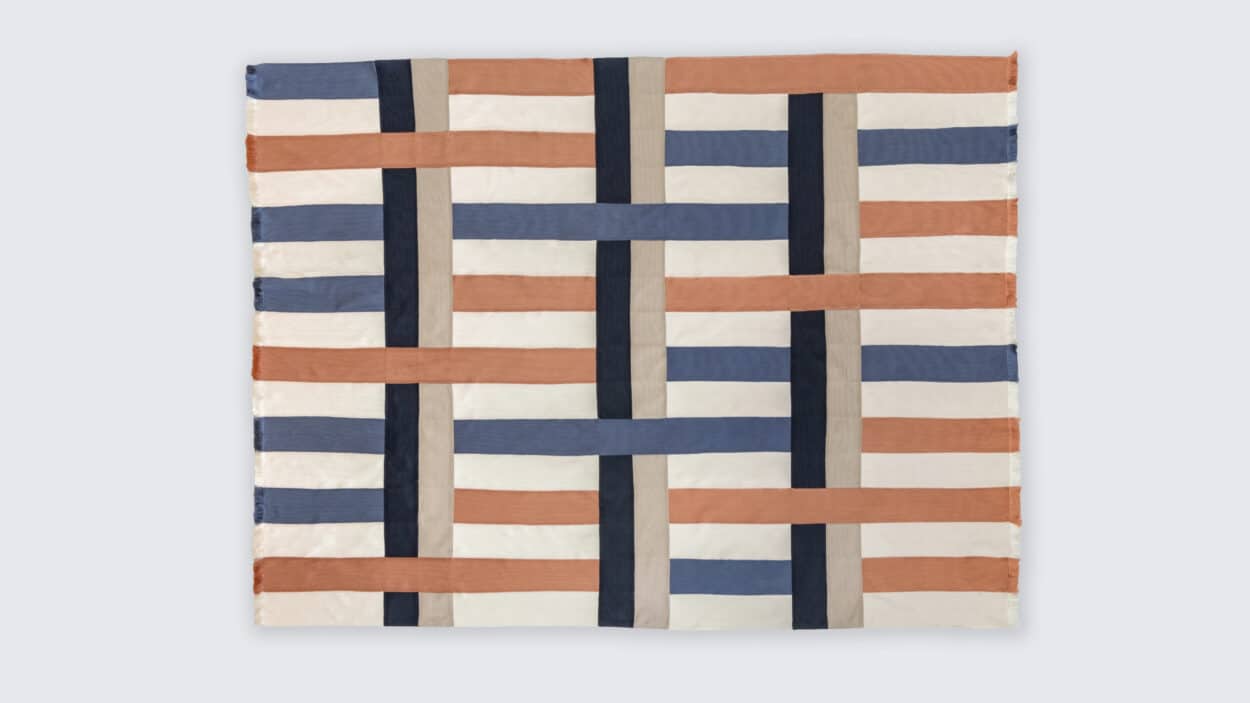
Androlus Studio partnered with Hanashyo on Apparat, a series of Gamma vases and with Marukyu on the Echappées bleues collection of decorative textiles. Apparat is an exploratory project around the “grain of rice” pattern called “Kometsunagi” created by Hanashyo, and their skill in etching Edo Kiriko glass. At Hanashyo’s request, the designer created a motif around their signature pattern. The series of 5 Gamma vases is presented as a color chart of the Kometsunagi pattern. The grains of rice appear subtly on the surface of the colored tube, revealing the different layers of the glass.
“Thanks to this Franco-Japanese collaboration with Pauline Androlus, we were able to develop new ideas of shapes, design, colors. In the delicate and meticulous Edo Kiriko cutting, there is a sincerity of the craftsman’s hand, inherited from his ancestors, which shines through. It is this sincerity, which is transcribed in the heart and the gesture of the craftsman which is found in our products, and which we would like to transmit to people.” – Hanashyo
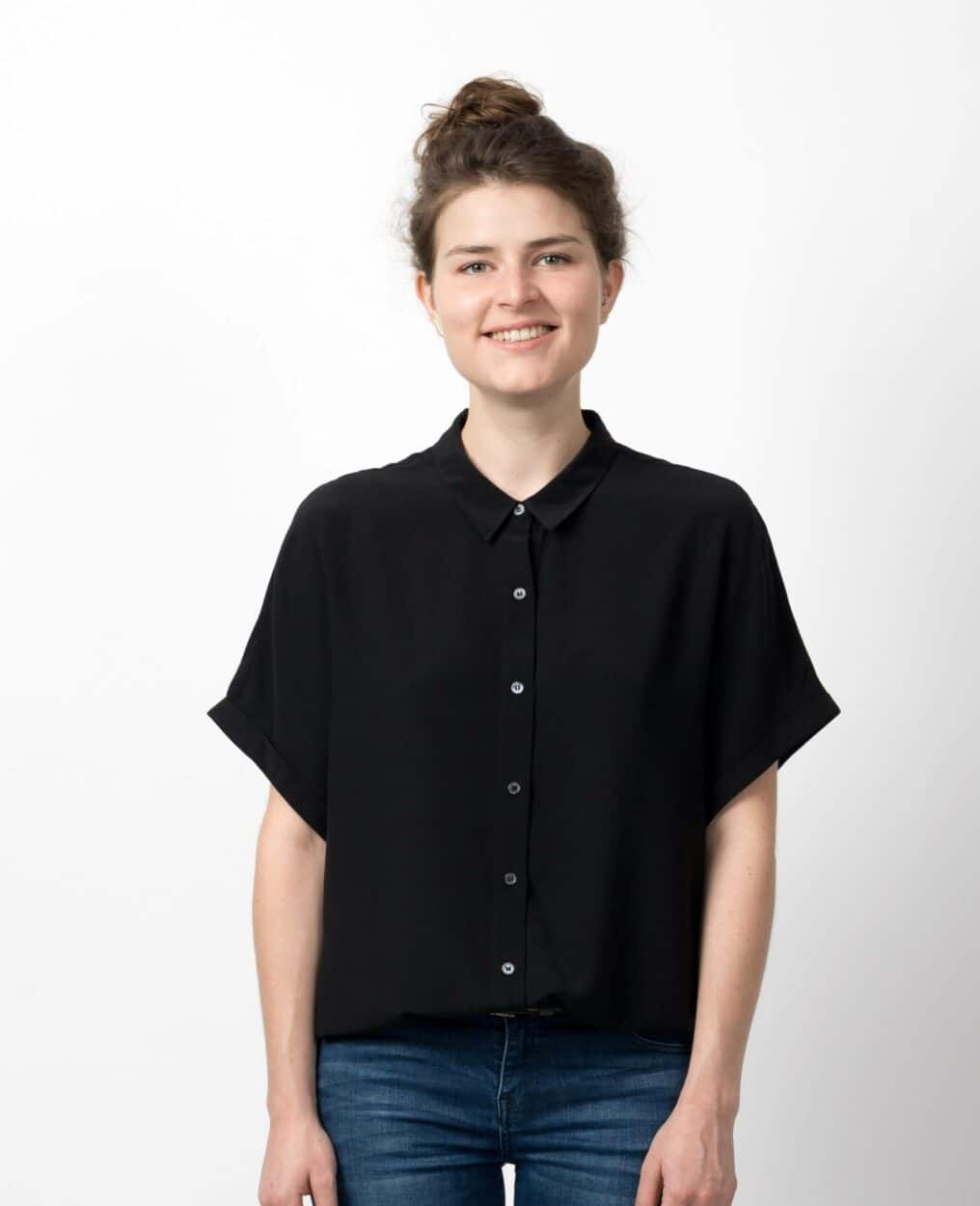
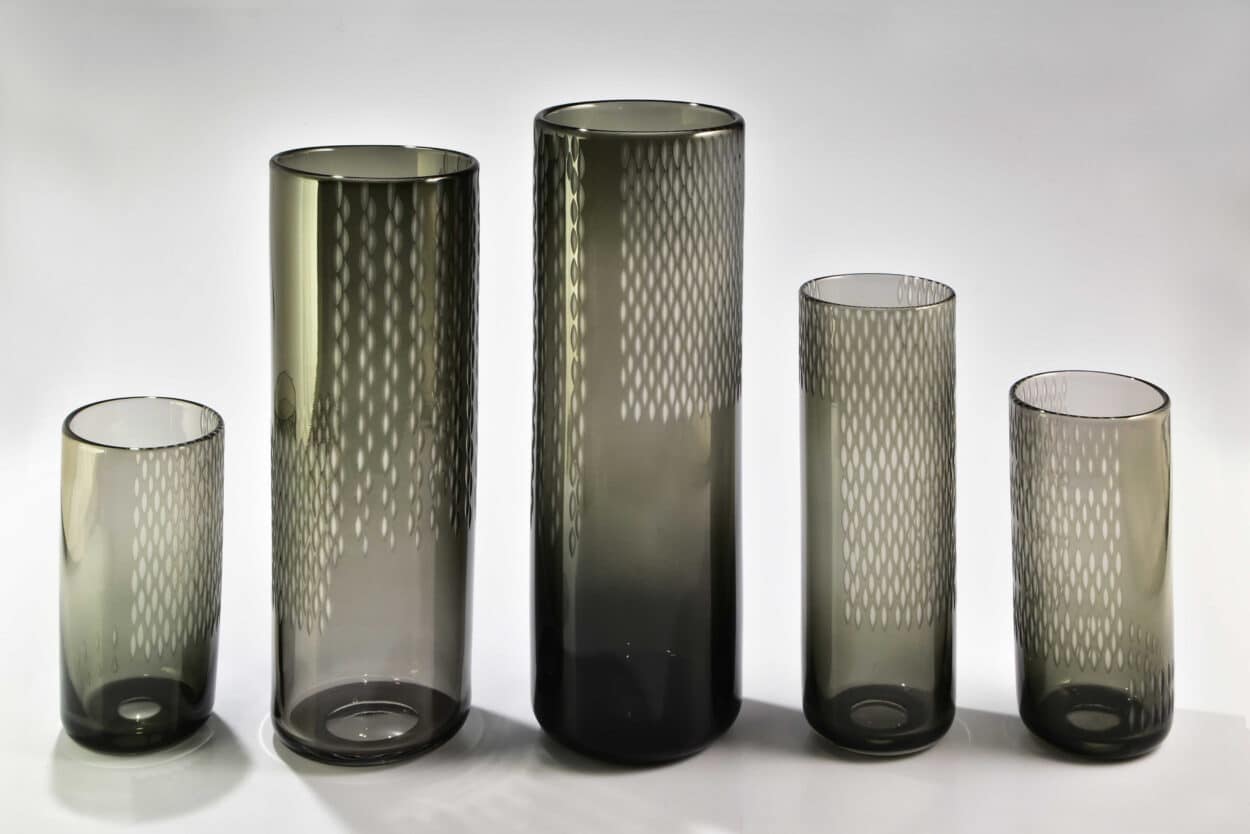
Marukyu Shoten is a traditional and handcrafted textile dyeing company Japanese called chusen used to make yukata and tenugui. The collaboration with Marukyu Shoten Panorama consists of two projects which can live together or independently. The first object entitled Miru is a support that allows displaying a textile chusen. In brushed brass and with graphic and discreet lines, this support enhances the textiles and highlights this printing technique. The support pinches the workpiece fabrics thus making it possible to hang easily and without damaging all types of textiles and giving them a top-of-the-range finish. Suspended, the whole moves function of the movements of the surrounding air, thus recalling the scenes of drying fabrics in the open air during manufacture. Textiles dyed according to the chusen techniques regain their fair value by becoming a decorative wall piece to contemplate. These brackets can be used in a home, as a display in shops or in public places.
“We are very grateful for this collaboration with Pauline Androlus, our first collaboration with a designer who allows us to get out of our sometimes frozen vision of the world. The dyeing technique (Chusen), was particularly well highlighted with one design at a time simple but technically challenging for artisans. From this collaboration was born a work offering a unique and tranquil vision of the world, which is not found in the textiles we realize.” – Marukyu Shoten
“Chusen dyeing technique is a technique mainly used for dyeing tenugui (these linens) and Yukata fabrics (summer kimonos). This process allows you to dye in one go with several colors, both the back and the front of the fabric. The fabric used is a cotton fabric made on a traditional shuttle loom. It’s a fabric, called wa-zarashi, known for its soft texture. We would like to convey to the world the chusen technique, not only through tenugui fabrics, but also yukatas, and the shirts.” – Marukyu Shoten

The second Echappées bleues project is a collection of patterns for the interior in close connection with the supports and with the architecture. The collection is presented like 4 paintings, 4 dreamlike windows that open onto an imaginary world. This series of patterns invites contemplation and dreams. This collection is inspired by windows and shoji, elements very present in Japanese architecture, which help the gaze to focus on an element of the outside. The Echappées bleues series is both an opening on oneself and on an outside imaginary and abstract. The palette consists mainly of blue, a color meditative and emblematic of Japan. In these patterns, the gradient and blending of colors are highlighted and give all the singularity to these textiles. We thus see that chusen is a dye printing technique. Each fabric is unique and carried by the hand of the craftsman who shaped it. White is left in the background and on the lines. It allows you to play with the transparency of the fabric.











